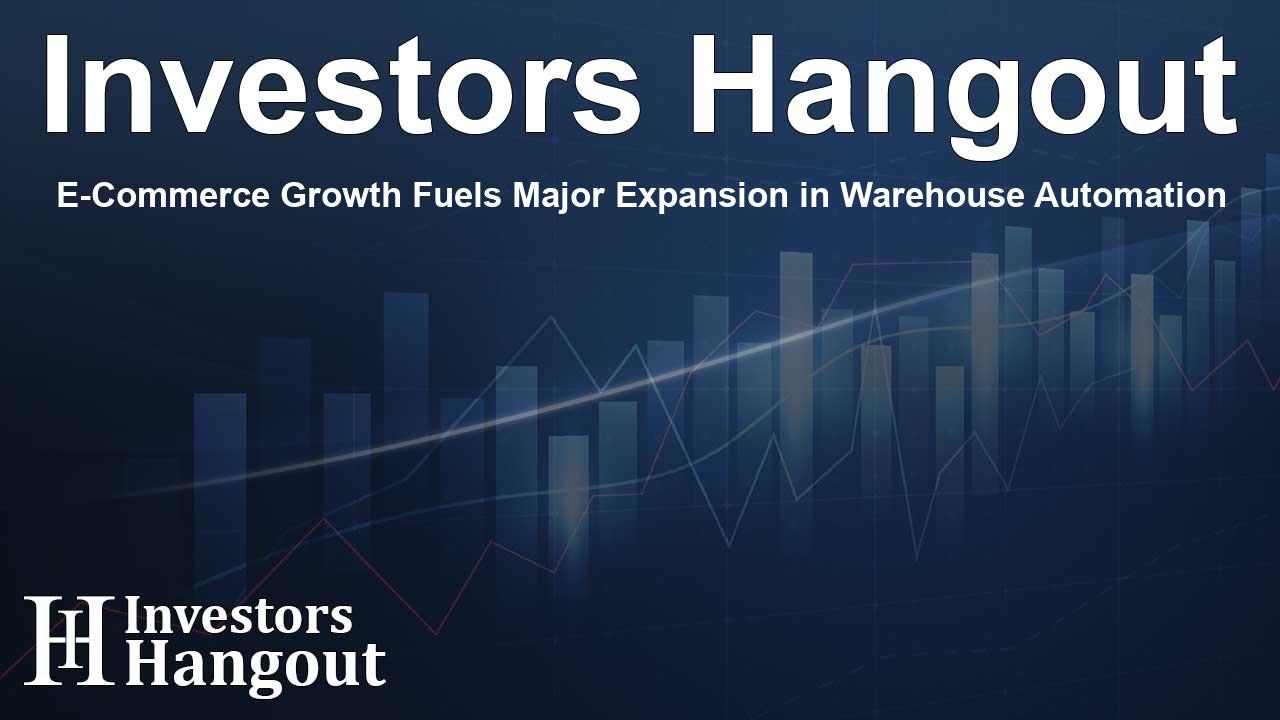E-Commerce Growth Fuels Major Expansion in Warehouse Automation

Warehouse Automation Market Set for $55 Billion Growth by 2030
The warehouse automation market is poised for remarkable growth, projected to reach $55 billion by 2030 with a compound annual growth rate (CAGR) of 15% from 2024 to 2030. This flourishing market is primarily driven by the rapid expansion of the e-commerce sector, which has revolutionized supply chain practices globally. Businesses are facing rising demands for efficiency and speed in order fulfillment, which necessitates advanced automation technologies.
Transformative Trends and Drivers of Automation
E-Commerce Boom
The surge in e-commerce has transformed traditional logistics significantly. The global logistics industry, valued at approximately $5 trillion, sees e-commerce as a key player pushing for automation. Unlike traditional retail, online shopping requires more individualized logistical workflows, necessitating sophisticated systems for picking, packing, and shipping products quickly and accurately. As consumer preferences shift towards instant gratification, the pressure to enhance automation grows stronger for logistics companies.
Challenges Facing the Market
Despite strong demand, warehouse automation companies encountered significant challenges from 2021 to 2023 due to supply chain disruptions, affecting order fulfillment capabilities. Initial order backlogs from 2021 began to ease by 2023; however, persistent macroeconomic concerns slowed investment in automation. As we advance into 2025, order volumes are anticipated to rebound as companies strive to meet surging consumer expectations.
Innovative Technologies and Key Industry Players
Recent years have witnessed a significant influx of innovative technologies in warehouse automation, such as automated picking systems, mobile robots, and cold storage solutions. Investments in emerging players like Symbotic, Geek+, and Fabric indicate robust growth potential. Meanwhile, established companies such as Dematic and Honeywell are consistently innovating to retain their competitive edge, integrating new technologies within their operations. Larger retailers, including Walmart and Amazon, are leveraging these advancements to improve supply chain efficiency.
Industry Consolidation Trends
Throughout the last decade, the warehouse automation sector has undergone substantial consolidation. Notable acquisitions highlight traditional players seeking innovation through technology leaders, indicating a strategic shift towards comprehensive automation across the supply chain. Examples include Rockwell's acquisition of Clearpath Robotics and Zebra's takeover of Fetch Robotics. These mergers are reshaping the landscape and enhancing the delivery of logistics solutions.
Market Opportunities and Strategic Insights
Market Geography Insights
The demand for warehouse automation is concentrated in key markets, including the United States, China, and Germany, together claiming over half of the global market share. European countries demonstrate strong market penetration, with emerging economies in Asia and Latin America fast becoming vital players in the automation landscape. Brazil and Mexico, for instance, are projected to experience considerable growth in the warehouse automation sector.
Automation in the Grocery Sector
As one of the most labor-intensive areas within logistics, the grocery distribution industry is increasingly focused on automation. The demand for quick deliveries coupled with growing online grocery shopping necessitates high efficiency in warehouse operations. The grocery automation market is expected to surpass $7 billion by 2030, emphasizing the importance of automation technologies in enhancing operational efficiency.
Order Picking Trends
Order picking remains a primary focus for automation within warehouses. This process, traditionally labor-intensive, is evolving with the introduction of advanced picking systems. Companies are increasingly deploying automated solutions alongside manual processes to optimize efficiency. Innovations in robotics and AI are significantly reducing operational costs and improving throughput, offering compelling returns on investment.
Frequently Asked Questions
What is the expected growth of the warehouse automation market?
The warehouse automation market is projected to grow to $55 billion by 2030, with a CAGR of 15% between 2024 and 2030.
What factors are driving the growth of warehouse automation?
The growth is primarily driven by the expanding e-commerce sector, increasing demand for fast delivery, and the need for more complex logistical processes.
Which regions are leading in warehouse automation demand?
Key markets include the United States, China, and Germany, with significant growth potential in emerging markets like Brazil and Mexico.
How is automation impacting the grocery sector?
Automation is essential for improving distribution efficiency in the grocery sector, expected to reach over $7 billion by 2030 due to rising demand for online grocery services.
What technological innovations are influencing warehouse automation?
Technologies such as automated picking systems, mobile robots, and cold storage solutions are significantly enhancing warehouse efficiency and operational capabilities.
About Investors Hangout
Investors Hangout is a leading online stock forum for financial discussion and learning, offering a wide range of free tools and resources. It draws in traders of all levels, who exchange market knowledge, investigate trading tactics, and keep an eye on industry developments in real time. Featuring financial articles, stock message boards, quotes, charts, company profiles, and live news updates. Through cooperative learning and a wealth of informational resources, it helps users from novices creating their first portfolios to experts honing their techniques. Join Investors Hangout today: https://investorshangout.com/
Disclaimer: The content of this article is solely for general informational purposes only; it does not represent legal, financial, or investment advice. Investors Hangout does not offer financial advice; the author is not a licensed financial advisor. Consult a qualified advisor before making any financial or investment decisions based on this article. The author's interpretation of publicly available data shapes the opinions presented here; as a result, they should not be taken as advice to purchase, sell, or hold any securities mentioned or any other investments. The author does not guarantee the accuracy, completeness, or timeliness of any material, providing it "as is." Information and market conditions may change; past performance is not indicative of future outcomes. If any of the material offered here is inaccurate, please contact us for corrections.